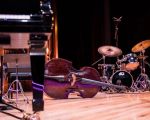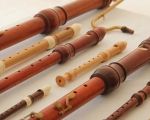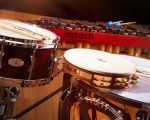Musical Instruments Characterizing the Impressionist Movement
The Impressionist movement, which originated in the visual arts, soon found its place in music during the late 19th and early 20th centuries. Much like the brushstrokes of an impressionist painting, the music of composers such as Claude Debussy and Maurice Ravel sought to evoke moods, images, and fleeting moments rather than following strict traditional forms. One of the most interesting aspects of this movement is the innovative use of musical instruments to create new and distinct sounds that perfectly captured the essence of this artistic era.
1. The Piano: A Central Instrument in Impressionist Music
When it comes to the Impressionist movement, the piano plays a crucial role. The piano was often used to evoke a sense of mood and color, much like an artist uses color on a canvas. One of the most famous examples of piano music from this period is Debussy’s “Clair de Lune,” which remains a symbol of the movement. The soft, flowing sounds, combined with subtle dynamics, were achieved through innovative techniques like the use of the sustain pedal and the use of the upper registers to create shimmering effects.
For instance, Debussy’s use of whole-tone scales on the piano was revolutionary, as it broke away from traditional harmonic structures. The piano’s ability to create both delicate and powerful sounds made it the perfect instrument for portraying the shifting moods and atmospheres that were central to Impressionist music.
2. The Harp: Adding a Mystical and Ethereal Quality
The harp became another important instrument in the Impressionist period, often used to add a delicate and mystical quality to the music. In compositions like Debussy’s “Danse sacrée et danse profane,” the harp is featured prominently, creating a shimmering texture that evokes the glistening of water or the light filtering through trees. The harp’s soft, ethereal sound matched the Impressionists’ desire to evoke fleeting moments of beauty and nature.
The harp’s ability to produce rich, resonant chords, as well as its ability to create delicate plucking sounds, made it a perfect match for the Impressionist style. The harp was often used in orchestral settings to complement other instruments or to highlight the ethereal quality of a musical phrase.
3. The Flute: Expressing the Colors of Nature
Another instrument commonly associated with the Impressionist movement is the flute. Its light, airy sound helped to capture the natural world’s beauty, a central theme in many Impressionist compositions. The flute’s ability to imitate birdsong, the wind, and other elements of nature made it an ideal choice for composers like Debussy and Ravel, who were inspired by the natural world.
In works such as Debussy’s “Prélude à l'après-midi d'un faune,” the flute’s soaring melodies express the dreamy, sensuous atmosphere of the piece. The fluidity and agility of the flute also made it an ideal instrument for capturing the ever-changing, ephemeral qualities that were so important to the Impressionist ethos.
4. The String Section: Creating Depth and Texture
The string section of an orchestra played a pivotal role in Impressionist music by adding layers of texture and depth. While traditional orchestral music often relied on strings to create a full, rich sound, Impressionist composers used the strings in more subtle and nuanced ways. The use of muted strings, delicate pizzicato (plucking the strings), and sweeping, lyrical lines helped create an atmospheric, fluid sound that was integral to the Impressionist style.
In Ravel’s “Daphnis et Chloé,” the string section plays a central role in conveying the lushness of the story’s setting. The use of light, almost whispering strings conveys a sense of movement and emotion that fits the Impressionist focus on expressing inner feelings rather than strict melody. The strings also helped to create the floating quality in much of the music, complementing the shifting textures that define the movement.
5. The Clarinet: Richness and Warmth
The clarinet was often used in Impressionist music to add warmth and richness to the texture. Its full, expressive tone can vary from a smooth, mellow sound to a bright, crisp quality. The clarinet’s versatility made it a valuable instrument in both orchestral and chamber music settings.
In Ravel’s “Le Tombeau de Couperin,” the clarinet plays a pivotal role, lending a sense of intimacy and elegance to the piece. It also appeared in Debussy’s “Première Rhapsodie,” where it was featured prominently in a solo section, showcasing its ability to evoke emotion and create delicate nuances. The clarinet’s rich sound helped deepen the emotional impact of Impressionist music.
6. The Trumpet: Adding Boldness and Character
While many of the instruments associated with Impressionism are delicate and ethereal, the trumpet was sometimes used to inject boldness and character into compositions. The trumpet’s bright, resonant sound can evoke strength and clarity, qualities that were sometimes used to contrast the soft, shimmering textures of other instruments.
In pieces such as Ravel’s “La Valse,” the trumpet plays a central role in driving the rhythm and energy of the music. While Impressionism often focuses on subtlety and mood, the trumpet’s presence reminds us that the movement also embraced a diversity of textures and contrasts. The trumpet’s role in Impressionist music highlights the balance between lightness and strength, capturing the fullness of the era’s emotional range.
Conclusion: The Unique Soundscape of Impressionist Music
The Impressionist movement in music was revolutionary in its exploration of sound, color, and atmosphere. The use of specific instruments helped composers capture fleeting moments and evoke emotions in a way that was never before seen in classical music. The piano, harp, flute, strings, clarinet, and trumpet each played their part in creating the impressionistic soundscape that defined this musical era.
By breaking traditional boundaries and experimenting with new sounds, Impressionist composers left a lasting legacy in the world of music. Understanding the instruments that characterized this movement not only helps us appreciate the beauty of the music but also gives us insight into the innovative spirit that shaped the 20th century’s musical landscape.








